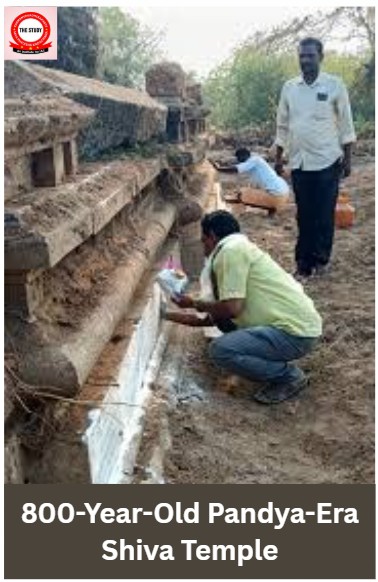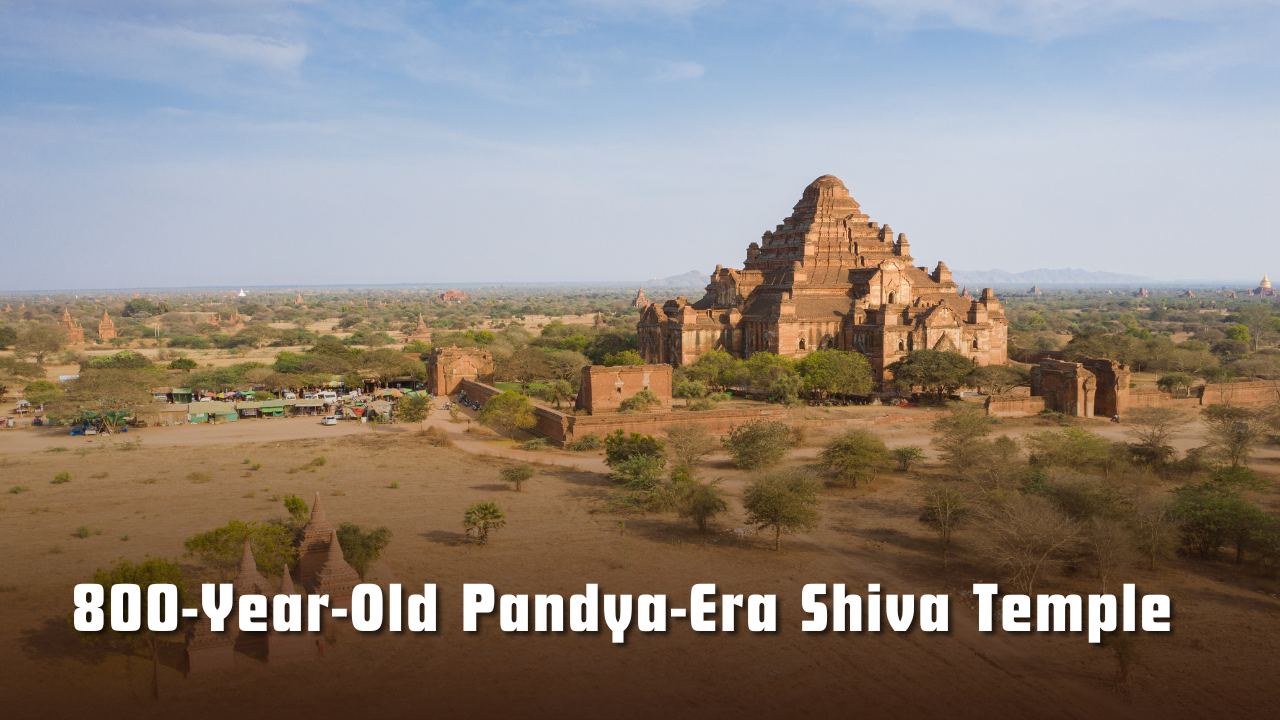Font size:
Print
800-Year-Old Pandya-Era Shiva Temple
800-year-old Shiva temple of later Pandya period unearthed near Melur
Context: In a remarkable archaeological discovery, the remnants of an 800-year-old Shiva temple dating back to the later Pandya period have been unearthed in Udampatti village, located in Melur taluk, Tamil Nadu.

More on News
- During the excavation, archaeologists discovered two Tamil inscriptions.
- The inscriptions date the temple to the reign of Maravarman Sundara Pandya around 1217–1218 CE.
What does the inscription reveal?
- The inscriptions reveal that the village was named Attur, and the temple was called Thennavanisvaram, with “Thennavan” being a title used by the Pandyas.
- They document a sale deed of a waterbody called Nagankudi, along with wet and dry land, sold for 64 kasu (coins) by Alagaperumal, a chieftain of Kalavalinadu, to Nambi Perambala Kuthan alias Kangeyan.
- The inscriptions also specify the four boundaries of the land and waterbody, noting that the tax from the land was designated for the temple’s daily expenses.
Historical Significance of Discovery
- The inscriptions provide valuable insights into the socio-economic dynamics of the later Pandya period.
- They confirm the ancient name of Udampatti as Attur and highlight the temple’s financial independence, a testament to the administrative sophistication of the Pandya dynasty.
- The discovery aligns with earlier documentation by the Tamil Nadu State Department of Archaeology (1974-75), which noted the existence of ancient temples in the region, many of which are now in ruins or have disappeared.
About the Pandya Dynasty
- The Pandya dynasty, one of the three crowned Tamil dynasties alongside the Cholas and Cheras, was a prominent power in South India, with roots tracing back to the 4th century BCE.
- Initially ruling from Korkai, they later moved their capital to Madurai. The dynasty experienced a revival under Kadungon in the 6th century, pushing out the Kalabhras, and reached its golden age under Maravarman Sundara Pandyan and Jatavarman Sundara Pandyan in the 13th century.
- Territorial Expansion: The Pandyas controlled extensive territories, including parts of Kerala, Sri Lanka, and Telugu country, and had trade links with Southeast Asian maritime empires like Srivijaya.
- Economic Strength: They dominated pearl fisheries along the South Indian coast, producing some of the finest pearls in the ancient world, and maintained diplomatic relations as far as Rome.
- Cultural Contributions: The Pandyas were patrons of Tamil literature, hosting the legendary Sangams in Madurai. They contributed to art, music, dance (notably Bharatanatyam), and temple architecture, including the iconic Meenakshi Temple in Madurai.
- Religious Influence: Shaivism and Vaishnavism flourished under their rule, with the Shaivite Nayanars and Vaishnavite Alvars gaining prominence after the dynasty’s revival.
Decline of the Pandya Dynasty
- The Pandyas faced repeated conflicts with the Pallavas, Cholas, Hoysalas, and later the Muslim invaders from the Delhi Sultanate.
- By 1323, the Jaffna Kingdom in Sri Lanka declared independence, and in 1335, the Pandyas lost Madurai to the Madurai Sultanate.
- They continued to rule regions like Tirunelveli and Tenkasi until the Madurai Nayak dynasty emerged in 1529.
Subscribe to our Youtube Channel for more Valuable Content – TheStudyias
Download the App to Subscribe to our Courses – Thestudyias
The Source’s Authority and Ownership of the Article is Claimed By THE STUDY IAS BY MANIKANT SINGH



